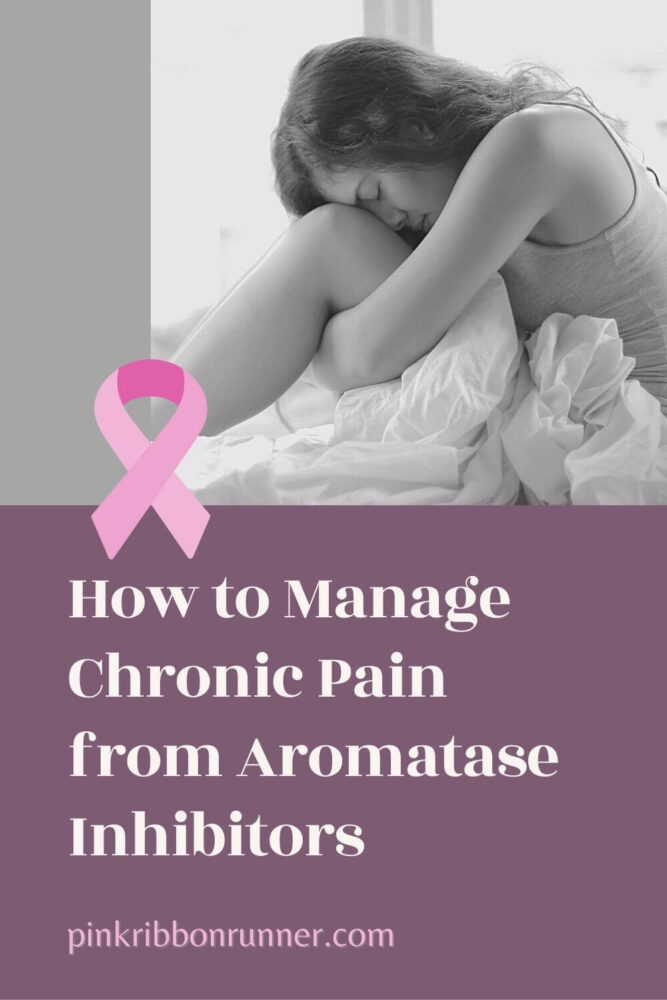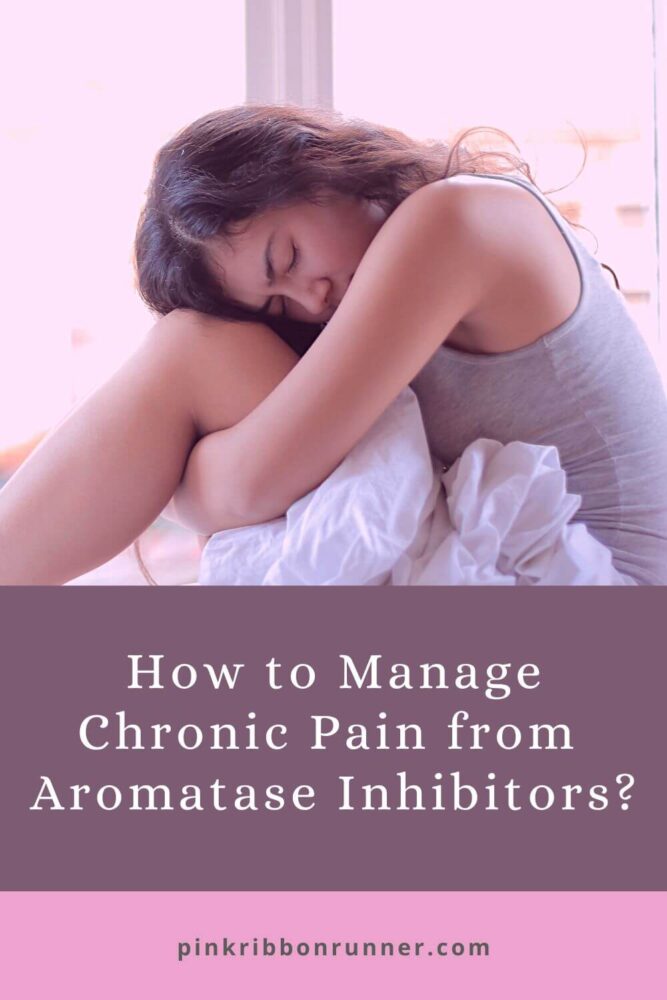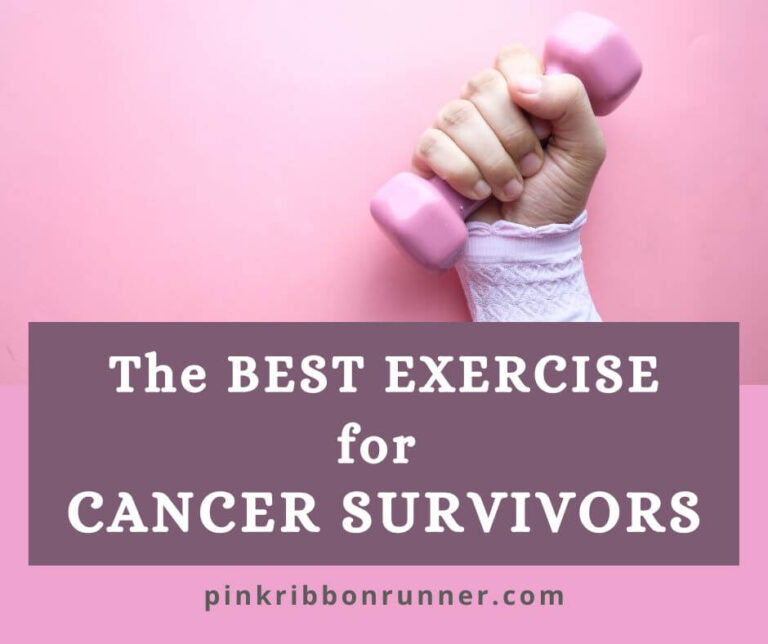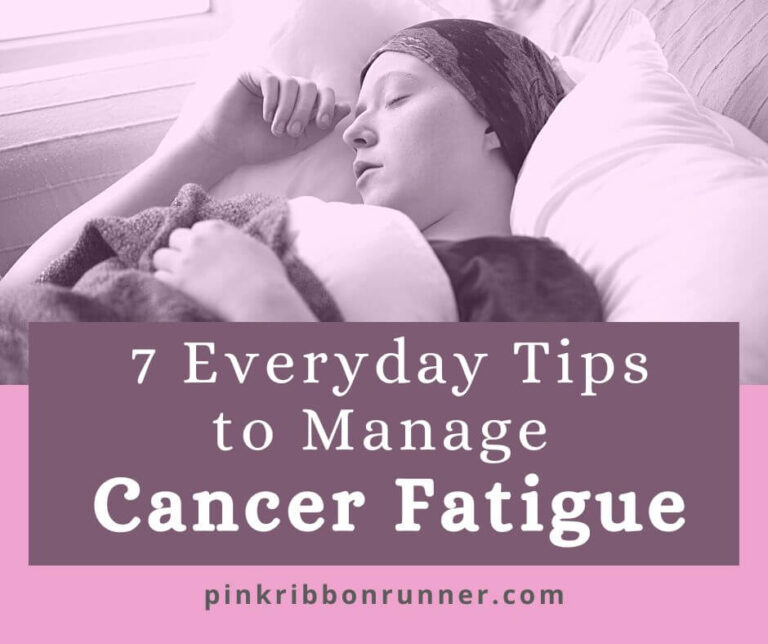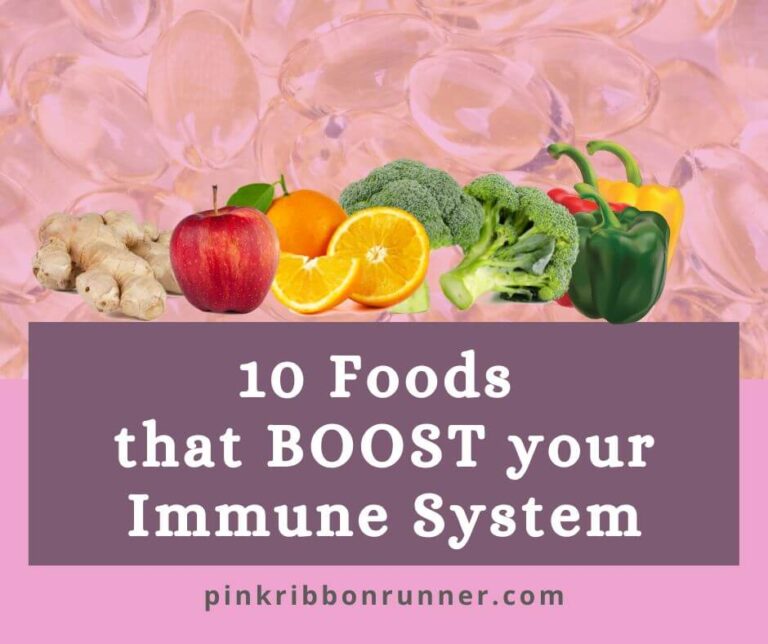How to Manage Chronic Pain from Aromatase Inhibitors
Living with breast cancer is difficult. Add in chronic pain and life can seem outright miserable. But, this is a reality for many breast cancer survivors on hormonal therapy. Aromatase Inhibitors are a class of medications that can cause debilitating pain side effects. It takes time to recognize this and learn how to live well with this condition. Many things can help reduce pain, make life easier, and prepare for bad days. Let’s look at what you can do for the lingering, chronic pain from aromatase inhibitors in breast cancer survivors. You can, indeed, manage chronic pain from aromatase inhibitors.
Breast Cancer Is Painful
For just a moment, put aside the tremendous emotional pain that this dreaded disease creates. I want to talk about the physical pain in this article. I will address emotional scars in another article. However, I know firsthand that both emotional and physical pain that breast cancer and its treatments create can be quite debilitating and lingering.
“Pain relief should be a human right, whether people are suffering from cancer, HIV/AIDS or any other painful condition ”
– Professor Sir Michael Bond M.D., President of IASP. – WHO, 2004 –
Surgery, chemotherapy, radiation, and other treatments frequently cause acute pain. This, of course, is recognized by oncologists. It is addressed by pain medications, which are usually successful to some degree.
And then, when all this is over and you have moved past all the acute pain, it can be very frustrating to discover that you have lingering pain. Chronic pain isn’t uncommon for breast cancer survivors. And it is often unexpected, debilitating, and life altering.
One of the biggest reasons for chronic, lingering pain is a medication we are placed on to help prevent breast cancer recurrence. Aromatase inhibitor medications are often prescribed for 5 to 10 years. With this medication, side effects are a problem for many women.

What are Aromatase Inhibitors?
Aromatase inhibitors are hormonal breast cancer medications, such as anastrozole, letrozole, and exemestane. These drugs act to block the growth of hormone receptor-positive breast cancer cells.
How do Aromatase Inhibitors Prevent Breast Cancer Recurrence?
An enzyme called aromatase in fat cells transform other hormones into estrogen. Estrogen is the hormone that promotes the growth of ER+ breast cancer cells. Aromatase inhibitors block the action of aromatase, thus lowering estrogen levels in post-menopausal women.
Aromatase inhibitors, by themselves, are not effective at lowering estrogen levels in pre-menopausal women, as these medications do not act on the estrogen production in the ovaries.
What are the Side Effects of Aromatase Inhibitors?
Pain isn’t the only side effect to anastrozole, letrozole and exemestane. There are other troubling side effects experienced by breast cancer survivors. Below is a short list of the most common ones.
- Joint and muscle pain (AIMSS)
- Loss of bone density & osteoporosis
- Hot flashes and night sweats
- Vaginal dryness
- Loss of sex drive
- Thinning hair
- Increased blood pressure and heart problems
- Mood swings, anxiety, and depression
Joint pain typically affects fingers, hands, wrists, elbows, shoulders, knees, and ankles. These are often diagnosed as carpal tunnel syndrome, osteoarthritis, tendonitis, bursitis, and fibromyalgia.

What is Aromatase Inhibitor-Associated Musculoskeletal Syndrome (AIMSS)?
Aromatase Inhibitor-Associated Musculoskeletal Syndrome, or AIMSS, is the official name of this recognized syndrome of chronic pain associated with medications such as anastrozole, letrozole and exemestane.
About half of women taking these medications develop chronic pain from aromatase inhibitors, significantly affecting their quality of life. Many of these women stop taking their medications prematurely despite the risk of breast cancer recurrence. Yes, the pain can be that bad to live with.
Research indicates that AIMSS symptoms most commonly develop within the first 3 months after onset of hormone therapy. However, symptoms can develop years later. Studies have suggested that more than 50% of women may be affected by AI-related joint and muscle pain.
I can personally attest to how frustrating and debilitating these side effects can be, having been on the medication for about 8 years. When I first started this medication, I was doing well and had minimal side-effects. Exercise was keeping my pain symptoms manageable. But after about 6 years, my pain levels began increasing and I asked to be referred to a pain specialist. Apparently, this pattern of increasing pain after 5 years of taking the drug is not uncommon, unfortunately.

What are the Symptoms of AIMSS?
Does any of this sound familiar to you too?
- Feeling like you have suddenly gotten very old
- Body or joint stiffness
- Pain in the morning when getting out of bed
- Pain after sitting for a prolonged period of time
- Chronic pain that zaps your energy
- Aches that make it hard to focus mentally or do basic tasks
- Weakness, especially weak grip strength
Now, AIMSS pain does seem to lessen when you start to move around. But it is so hard to get up and go, sometimes. And when you stop moving, the pains tend to come back.

What Causes Chronic Pain from Aromatase Inhibitors?
How AI-related joint and muscle pain develops is not well understood. There are some theories, however.
One theory is that a rapid drop in estrogen levels created by these medications lowers our pain threshold. This may result in the brain perceiving pain in joints and muscles when a pain stimulus just isn’t there to the same degree. In other words, there is a disconnect in how our brains detect pain. This does not mean that it is “all in our heads”. The pain we feel is real and it is recognized as a medical syndrome.
Another theory is that the lower estrogen levels cause the release of inflammatory chemicals called cytokines. This can lead to bone loss, rapid aging, and pain.
The cause of AI-related pain may not be one theory or the other. It is quite possible that both mechanisms of inflammation and brain perception are the reasons for our chronic pain on aromatase inhibitors. It is also possible that these theories may change as more research is done to understand why this occurs.
Are You at Risk for AI-Related Chronic Pain?
Risk factors associated with developing AI-related pain are not clear. Research has not been conclusive. Some studies report conflicting evidence. Below is a short list of some of the reported risk factors.
- Prior use of tamoxifen
- Overweight (higher BMI levels)
- Prior chemotherapy, especially with paclitaxel or taxotere
- Last menstrual period within 5 years prior
- Pre-existing joint disease, such as rheumatoid arthritis
One thing is clear, more research is needed to better understand the risks involved in AIMSS. Investigators are also exploring a possible genetic component to this side effect.

What Helps with the Pain from Aromatase Inhibitors?
What helps one woman may not help another. And, again, there are different theories. We don’t fully understand what causes AIMSS. But there are somethings that may help you manage AI-associated pain. Be sure to discuss these with your doctor.
- Eating a clean, healthy diet with foods that reduce inflammation
- Staying away from a lot of sugar, fat, salt, and inflammatory foods
- Exercise and stay as active as possible, within your scope of limitations or unless it makes the pain worse
- Acupuncture or acupressure
- Supplements, such as vitamin D and omega-3 fatty acids
- Anti-inflammatory medications, such as ibuprofen and naproxen
- Making life easier with rest, self-care, and daily living ability aids, as needed
Are There Any Medications for AIMSS?
There are stronger pain medications, such as duloxetine, that may help some women. However, these medications have their own side-effects. You will need to consider the pros and cons of taking more medications and determine what is right for you.
Discuss pain therapy with your oncologist. You could also ask for a referral to a doctor who specializes in pain management. Pain doctors are often anesthesiologists, neurologists, or rehabilitation medicine specialists.
You do have many pharmaceutical choices to help manage your pain. You will need to find the right medication(s) for you. And that may mean taking several different medications at lower doses for balanced analgesic (pain) therapy.
However, if you are leaning towards these stronger medications, I encourage you to investigate the side-effects and addictive properties before you start taking them.
Are There Other Treatments for Aromatase Inhibitor Related Pain?
For some women, switching to a different AI medication may help. There are anecdotal reports from women who are painful on one aromatase inhibitor but feel better when they switch. Some breast cancer survivors suggest that it may even be a specific brand of medication they have problems with. However, this phenomenon isn’t well researched yet.
Some breast cancer survivors who experience AI-related pain are prescribed intermittent therapy. This means that you are on your medication for a while, then you come off your medication for a designated period, under the guidance of your oncologist.
However, there is not good scientific data to know if intermittent therapy or switching AIs is helpful or not. So, be sure to discuss all your options with your oncologist and find something that helps you.
What Can You Do If You Have AIMSS?
So, what does all this mean for you? If you suspect you have chronic pain from aromatase inhibitors, here are some things you can do to help yourself.
- talk to your oncologist about your pain
- seek professional help from a pain specialist, physiotherapist, or acupuncturist, as needed
- learn more about aromatase inhibitor-associated musculoskeletal syndrome
- audit your eating habits, perhaps with a registered dietitian
- start an exercise program, but start low and slow and don’t over do it
- find a support group
- learn ways to make your daily life easier, perhaps with an occupational therapist
- set realistic goals based on your pain levels

Living with chronic pain is difficult, but it is possible to live well in this new normal. I have learned to make my life easier, yet more meaningful. The journey has been long, and it will continue but I know that I can live with chronic pain. And I know you can manage it too!
Post Photo Credits: depositphotos.com and canva.com

